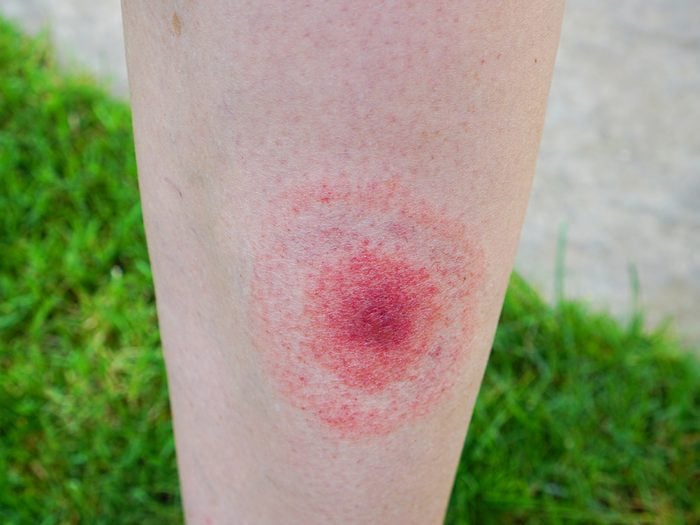
A Guide to Tick Borne Disease in Canada
Lyme disease
The best-known tick borne disease in Canada is Lyme disease: an inflammatory condition caused by strains of Borrelia bacteria, carried by blacklegged ticks. It’s the most common tick-related illness, and it often comes with a rash (above), as well as fever, nausea and muscle and joint pain. Remember: ticks may thrive in deciduous forests but populations are spreading to more urban settings. To find out if Lyme disease-carrying ticks live near you, visit the Health Canada website to track problem areas listed by province.

Babesiosis
Carried by blacklegged ticks, this illness is caused by the microscopic parasite Babesia microti. The parasite infects red blood cells, causing fevers, chills, headaches and fatigue. More severe cases can lead to jaundice, anemia and shortness of breath. Although still relatively rare, this disease is on the rise in a number of provinces and states.
How big is a tick? A youngster is the size of a poppyseed; a male, the equivalent of a sesame seed; a female measures up to a flaxseed. After they’ve fed, they get significantly larger. CanLyme offers some helpful charts to identify ticks.
Find out how ticks became a major threat to our health.

Human granulocytic anaplasmosis
This infectious disease is spread by blacklegged ticks carrying the bacterium Anaplasma phagocytophilum. It attacks white blood cells and leads to fever, chills, headaches and muscle aches.
Check out five common misconceptions about ticks.

Rocky Mountain spotted fever
Transmitted by an infected American dog tick (above) or Rocky Mountain wood tick, this illness—up until recently—has been mostly confined to the southern United States. It typically shows up with a fever, headache, nausea and then a rash.
Here are four skin changes worth discussing with your doctor.

Powassan
This tick-borne virus can be transmitted by the blacklegged tick but is extremely rare—only 21 cases have ever been reported in Canada. Some people don’t develop any symptoms; others have a fever, headache, vomiting or even inflammation of the brain and meningitis.
Now that you’re familiar with the various tick borne diseases in Canada, check out 20 symptoms you should never ignore.